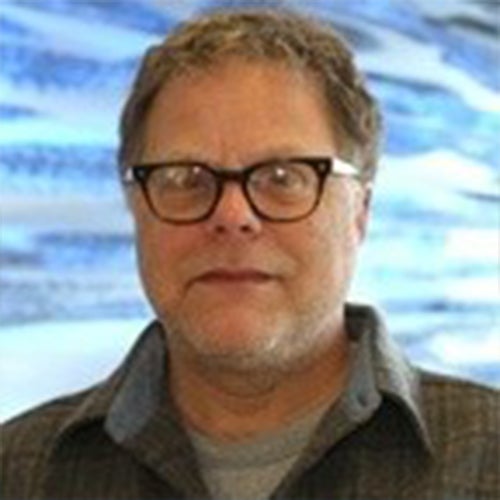- Professor of Oceanography
- Marine and Atmospheric Chemistry
- Phone: 401.874.6200
- Email: spivack@uri.edu
- Office Location: 116 Horn
Biography
Dr. Arthur Spivack is an oceanographer who not only is exploring the past but also has an eye toward the future.
“In oceanography, my specialty is the chemistry of the earth and using chemistry to understand geology, biology and climate. I work on both basic curiosity-driven science questions as well as applied problems,” says Spivack, a GSO faculty member since 2001.
Spivack and others at GSO are study the biology and physics of the ocean by looking at sediments deep beneath the sea floor.
To gather the data they are looking for, they utilize a special shipboard rig that inserts tubes to extract sediment cores, 50 meters deep. While the public might think ocean sediments that deep are lifeless, researchers have found otherwise. Not only is the microbial life deep under the sea floor, there is ample evidence of the type of conditions that existed on Earth millions of years ago.
In fact in several months, Spivack and others will be embarking on a Navy ship to explore the sediments in the northwestern Atlantic (15-25 degrees N). Their goal: to find out what the ocean looked like during the last glacial maximum (about 15,000 years ago).
“Our goal will be to understand the role of the ocean in a past climate change, particularly deciphering the biology and physics of the ocean. It should have a broader impact in helping us how the climate will evolve in the future in part in response to increasing carbon dioxide.”
Spivack said he and his colleagues will be the last team to use the special coring device because the Navy ship will be decommissioned—he was among the first crew to use the equipment years ago.
Studies of the ocean’s deep floor sediments have resulted in a bountiful harvest of knowledge. The sediments contain a record of Earth’s environment, “just like tree rings,” he notes, and they reveal a major habitat for life on Earth. What has also amazed scientists is the amount of diversity they found in the sediments.
A native of New York, Spivack says he got started in oceanography because of a combination of intellectual curiosity and opportunity. The opportunity came when he was an undergraduate and a professor was looking for someone to work in his lab at MIT. The professor was active in field programs in East Africa. Spivack is a product of the MIT-Woods Hole program and earned his doctorate there. He did a post-doc at the California Institute of Technology. Positions at Scripps and the University of North Carolina followed. When he heard about an opening at GSO, he went for it. “GSO was an opportunity to be at an oceanographic institution and had a reputation for being a congenial place to work,” he says.
Spivack does a considerable amount of undergraduate teaching—perhaps more so than others at GSO. He teaches an honors program course on oceans and global change and another called “astrobiology” which has the attractive theme of studying life everywhere in the universe or as he puts it “from the Big Bang to Darwin.” The course covers evolution, astrophysics, planetary science and global climate change. “Kids like it,” he says, adding he recently had two students in his class who said they were going to change their majors to geology because of the class.
Another project on his plate is one designed to understand what controls arsenic in groundwater. He and his collaborators will be testing a new ground-based drilling platform that they will use in Southeast Asia where arsenic in water (arsenic is a natural product) is causing major health problems including cancer. A lot of those countries do not have the ability to treat water. He said he and others were awarded the NSF funded project because of their experience in doing core sampling in the ocean.
Spivack says he likes GSO because of its intellectual and collegial atmosphere and likes working with graduate students.
Research
Biogeochemical cycling, Biogeochemistry, Carbon cycle, Chemistry, Geochemical exchange in Earth, Geochemical tracers, Geochemistry, Microbial activity in sediments, Microbial biogeochemistry, Microbial ecology, Suboxic ecology
My primary research areas are environmental and marine geochemistry. In general, I develop new chemical and isotopic techniques and use these to study a range of basic and applied earth science problems. These include studies of: microbial biogeochemistry, turbulence and dispersion, marine hydrothermal systems, ground-water contamination, sediment pore fluids, ocean paleo-chemistry, and atmospheric chemistry.
Education
Ph.D. Oceanography, Massachusetts Institute of Technology / Woods Hole Oceanographic Institution, 1986
B.S. Chemistry, Massachusetts Institute of Technology, 1980
I teach undergraduate and graduate courses in general oceanography, astrobiology, biogeochemistry, solution geochemistry.
Selected Publications
D’Hondt, S., B. B. Jorgensen, et al. (2004).
Stewart, M. A. and A. J. Spivack (2004).
Spivack, A. J., M. Kastner, et al. (2002).
Smith, D. C., A. J. Spivack, et al. (2000).
Volpe, C., M. Wahlen, and A. J. Spivack (1998). Chlorine isotopic composition of marine aerosols: Implications for the release of reactive chlorine and HCl cycling rates. Geophysical Research Letters 25(20): 3831-3834.

